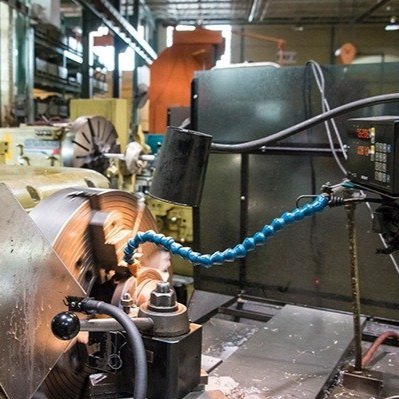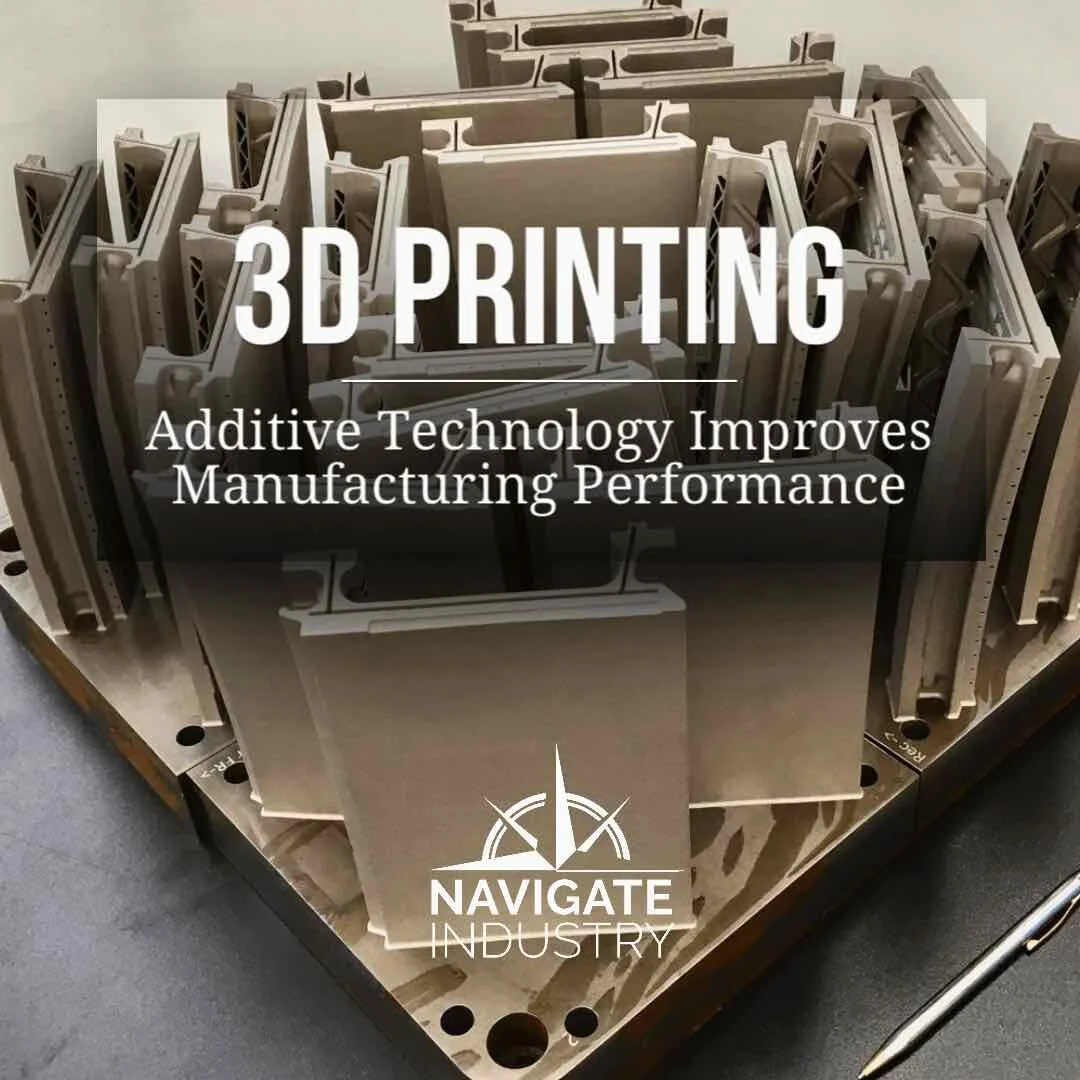10 Manufacturing Trends That Will Impact 2024
/While lingering coronavirus safety, strategy, and exit plans will continue to dominate the landscape of manufacturing trends in 2024—affecting almost every other trend—big data, IoT, predictive maintenance and innovative technologies like 3D printing, augmented reality, and drones will drive manufacturing in the next year and beyond.
By Michelle Segrest, Navigate Content, Inc. – Reporting on the Industry
There are some innovative technologies that will continue to dominate the manufacturing landscape in 2024.
Game-Changing Innovation Manufacturing Trends for 2021
1. Manufacturers Continue to Focus on IIoT
Because of its adaptability, innovation, remote monitoring and predictive maintenance capabilities, the Industrial Internet of Things (IIoT) will remain a top trend in manufacturing. As companies make digital transformations using IIoT data, they can see immediate results that save time and money. IIoT is having a profound effect on the way companies collect, manage, and analyze data.
Siemens is a global-technology company that is springing into action to provide digital-technology strategies. Siemens has spent more than $10 billion to acquire software companies in the past 10 years and employs more than 24,500 software engineers.
“IIoT is not a silver bullet for everything,” said Alistair Orchard, vice president, Digital Enterprise, Siemens. “It’s not the entire identity of our digitalization platform, but it is highly central through our strategy. We complement IoT with things like simulation, augmented reality, and digital-twin technology.”
More than 23,000 companies offer IIoT solutions worldwide.
2. Additive Technology (3D Printing) Takes Manufacturing to a New Level
Companies can produce more reliable and efficient components faster and with fewer resources using 3D-printing technology, also known as additive technology, which is improving manufacturing performance. By adding materials layer by layer using digital data from a 3D model, companies can now print miniature jet engines, engine parts, turbine engines, ultrasound transducers, pump impellers, and appliances. Even items such as clothing, pottery, shoes, eyewear, orthopedic implants, and some food products can be produced using additive-manufacturing techniques. In 2017, GE Aviation revealed it had used additive manufacturing to create a helicopter engine with 16 parts instead of 900.
Chicago-based global aftermarket company HydroAire Inc. uses additive manufacturing to create spare parts for its clients. HydroAire refurbishes extremely old pumps and pump parts, such as impellers, for equipment that is sometimes more than 50 years old.
This drives the need for replacement parts and, in some cases, emergency replacement parts. Considering the age of these pumps, the replacement parts from the manufacturer are likely obsolete and may not be easily available. Further complicating the situation is the location of the manufacturer. Many cast parts are manufactured outside the U.S and have long lead times.
3. Augmented Reality is the Future of Manufacturing
Connecting humans and machines through augmented reality is changing the face of industrial manufacturing and providing efficiency solutions. When digital content is overlaid on a piece of machinery, the equipment comes to life. Detailed instructions pop into focus to guide the operator, helping him/her to identify and fix any problems. Animated 3D renderings, in exact proportion, explode into view and visually show the operator how to repair and maintain the machinery through step-by-step visual aides.
Like something from “The Terminator” or “Minority Report” movies, the operator can instantly see the digital content directly in front of him. This is one example of how augmented reality (AR) is revolutionizing the efficiency of industrial operations. Thanks to this technology, paper manuals will soon be as ancient and obsolete as a rotary phone mounted on a wall. No longer will operators need to search and research to find answers to technical questions. With AR technology, solutions to their problems literally appear before their eyes.
Through a digital device [goggles, a head-mounted display (HMD), or a smartphone or tablet], augmented reality allows humans to “merge” with the machines. The technology recognizes the equipment and understands how it works. It then springs into action with real-time solutions.
4. Drones (Unmanned Aircraft Systems) Used in Manufacturing
Unmanned-aircraft systems are excellent and safe inspectors, but the future is in analyzing the data they collect as drones continue to be used in manufacturing to improve reliability and operations.
They can be as small as a pizza or as large as a picnic table. With the help of a licensed pilot, they can fly over and around heavy equipment. They can hover high above facilities and gather data from areas that would require scaffolding and cranes for humans to reach. They can maneuver into tight, hard-to-reach spots, such as industrial piping. Most important, they safely collect valuable data in record time and with minimal risk of unnecessary shutdowns or need for excessive manpower.
Unmanned aircraft systems (UAS)—more commonly known as drones—are being used effectively for a variety of reasons and in multiple industries. For now, the drones require a licensed pilot to manually maneuver them, just as if he/she were flying an airplane.
Collecting the data is the first step. Analyzing data is the critical step. This is where companies such as Industrial Skyworks come into the equation. The company primarily performs building inspections (roofs and walls) for architects. They also work extensively with inspection companies in the oil-and-gas industry.
“You have a collision of these two worlds,” explained Michael Cohen, the company’s CEO. “The drones that are now able to fly in and read complex environments, using things like sonar and lasers to understand where the walls are, they are thinking in real time about how to avoid obstacles and duck under pipes and go through very thin channel ways in real time. They are learning how to identify problems. It’s Terminator-type stuff. It’s very sci-fi.”
5. Pilot Plants Remove Risk from Large-Scale Manufacturing
Pilot plants demonstrate the feasibility of proposed process technologies for real-world operations and help manufacturers remove the risk from full-scale projects.
De-risking has always been the driving force behind pilot plants and that force is as strong, if not stronger, in today’s environment of ever-shorter product life cycles. For example, when a company’s research and development group has an idea for a new process technology, testing may be performed at a “glass scale.“
A pilot plant is meant to show that a process technology can be made at a smaller industrial scale, or perhaps two evolutions of that scale, before a larger, full-scale production plant is built.
“Pilot plants are the true workhorse of the process development industry,” said David Edwards, P.E., vice president, sales and marketing for Zeton Inc., Burlington, Ontario, Canada, which completes laboratory, pilot-plant, demonstration-plant, and small modular-production-plant projects around the world. “As chemical or biological processes are scaled from the laboratory to production, pilot plants provide the first window into continuous, as opposed to batch, processing. It will often incorporate unreacted feed/product recycle so the mass balance can be closed.”
6. Big Data & Data Analysis Improves Manufacturing
Manufacturers are finding ways to gather, analyze, and use data analytics and analysis to solve problems before they happen and drive upgrades in uptime and quality. Artificial intelligence, machine learning, and advanced big data help address critical challenges in quality and productivity for manufacturing.
There was a time, not so long ago, when manufacturing companies had systems that were stuck in silos with little or no communication between humans and machines. Data was difficult to gather and shared only through spreadsheets and by word of mouth, making problems almost impossible to predict.
Today, not only are humans and machines communicating, but machines are talking to each other. Massive amounts of raw data are flying through the air at warp speed revealing all kinds of intelligence. It’s one thing to have the data. It’s another to be able to analyze the data.
But the secret sauce, according to Nathan Oostendorp, co-founder and chief technical officer of Sight Machine in San Francisco, is dissecting the data, identifying the right data, and then using the knowledge gained in a meaningful way to create actionable results.
7. Predictive Maintenance Continues to Be a Manufacturing Trend
Predicting failures and avoiding downtime will never go out of style. It remains a top manufacturing trend this year and every year. With 98% of organizations reporting that a single hour of downtime costs them over $100,000, manufacturers continue to look for ways to adopt reliable preventive maintenance strategies. Reducing unplanned outages and extending the life of machinery will always be the name of the game in manufacturing.
General Manufacturing Industry Trends
8. Emerging Technologies
We will depend on innovative technologies like rapid 3D printing of protective equipment, augmented reality headsets and finding new creative ways to manufacture necessities. Remote support will continue to help engineers guide their customers through remote maintenance tasks.
Employee safety continues to be a driving trend among all industries, not just manufacturing. Additional sanitization, social distancing, and vaccination programs have been a primary focus throughout recent years. Meanwhile, COVID resiliency programs replaced short-term disaster recovery plans for most manufacturers.
Hitachi says that “The unfortunate reality of COVID-19 is that certain products and the companies that manufacture them will disappear from the marketplace, never to return.” Those that survive will have to start over when it comes to their strategies, and they will need to develop a COVID-19 exit strategy.
9. Supply Chains Will Become Collaborative Networks
This prediction extends through 2024. The pandemic and other disruptors interrupted supply chains, especially early on, so resiliency will be more important than ever. Supply chains will become more resilient by manufacturers pooling data, businesses investing in logistics operation centers, the rise of industry marketplaces, and the proliferation of supplier trust networks.
10. Knowledge Workers Will Be in High Demand
Knowledge workers with tech skills will be in high demand, especially with regard to artificial intelligence (AI) and automation. Data scientists will play a key role in critical digital content analysis.
Data scientists are highly educated and have a deep depth of knowledge for programming. They know how to work with unstructured data, i.e., undefined content that doesn’t fit into database tables, and can translate complicated formulas into a format that is easy to understand for the layman. According to many online articles, the data scientist must possess a high level of intellectual curiosity, an aptitude for business acumen, and highly developed communication and teamwork skills.
Data scientists are difficult to find. An Aug. 2018 report, LinkedIn Workforce Report for US revealed that the demand for data scientists is “off the charts,” with data-science-skills shortages present in almost every large U.S. city. Nationally, there is a shortage of 151,717 people with data-science skills, with particularly acute shortages in New York City (34,032 people), the San Francisco Bay Area (31,798 people), and Los Angeles (12,251 people).
Michelle Segrest is President of Navigate Content, Inc., a full-service content creation firm. She has been a journalist for more than three decades and specializes in covering the people and processes that make a difference in the industrial processing industries. Contact her at michelle@navigatecontent.com



















